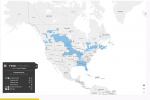Hello all,
I love near major city with plenty of construction projects on the go. For those of you in the drone construction services field what does it take to get started?
Is it required to have a surveyor on the team or subcontracted and GNSS RTK survey equipment/GCPs etc. for centimeter level accuracy or are most jobs just progress photos/videos and orthomosaics where positional accuracy is not paramout?
Thanks for the help,
Ash
I love near major city with plenty of construction projects on the go. For those of you in the drone construction services field what does it take to get started?
Is it required to have a surveyor on the team or subcontracted and GNSS RTK survey equipment/GCPs etc. for centimeter level accuracy or are most jobs just progress photos/videos and orthomosaics where positional accuracy is not paramout?
Thanks for the help,
Ash





